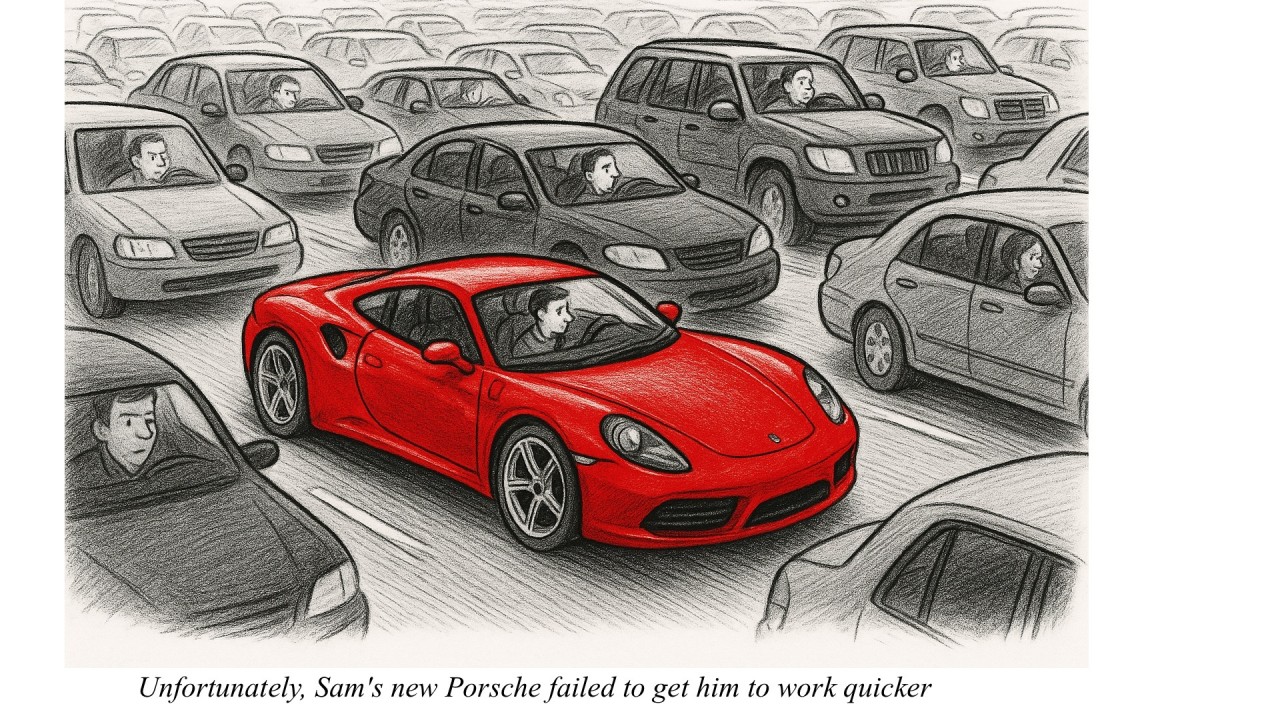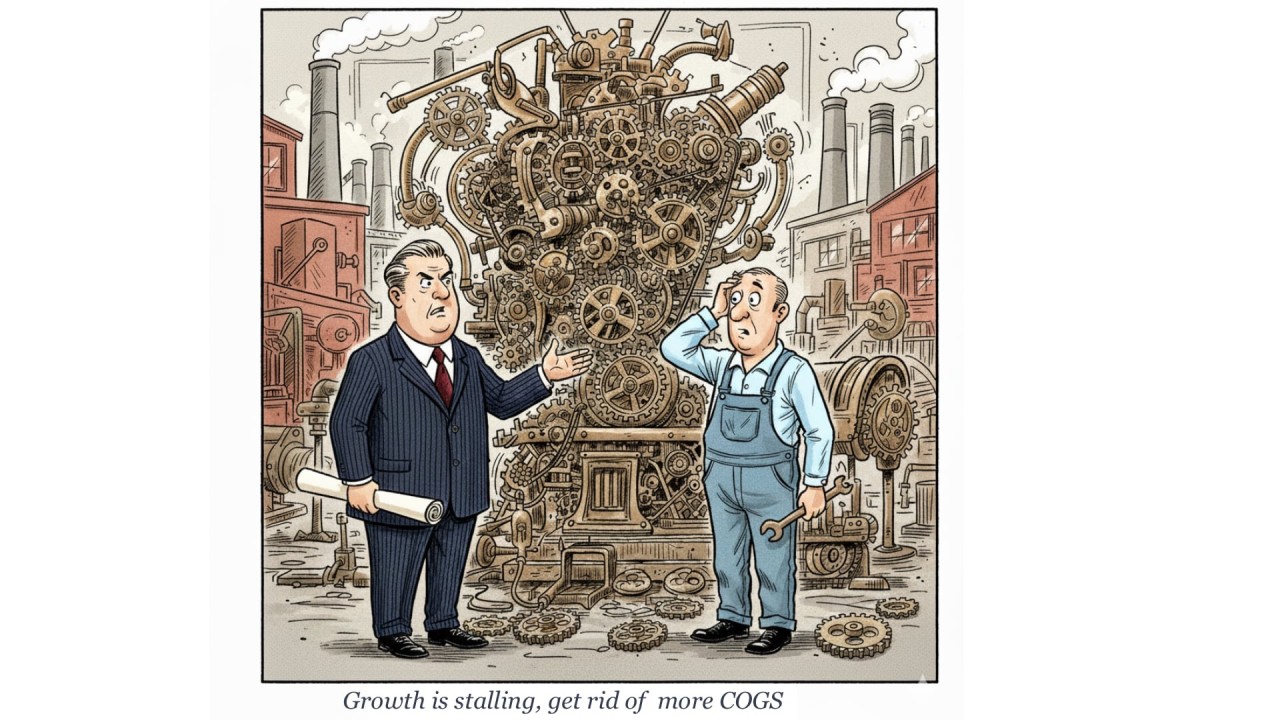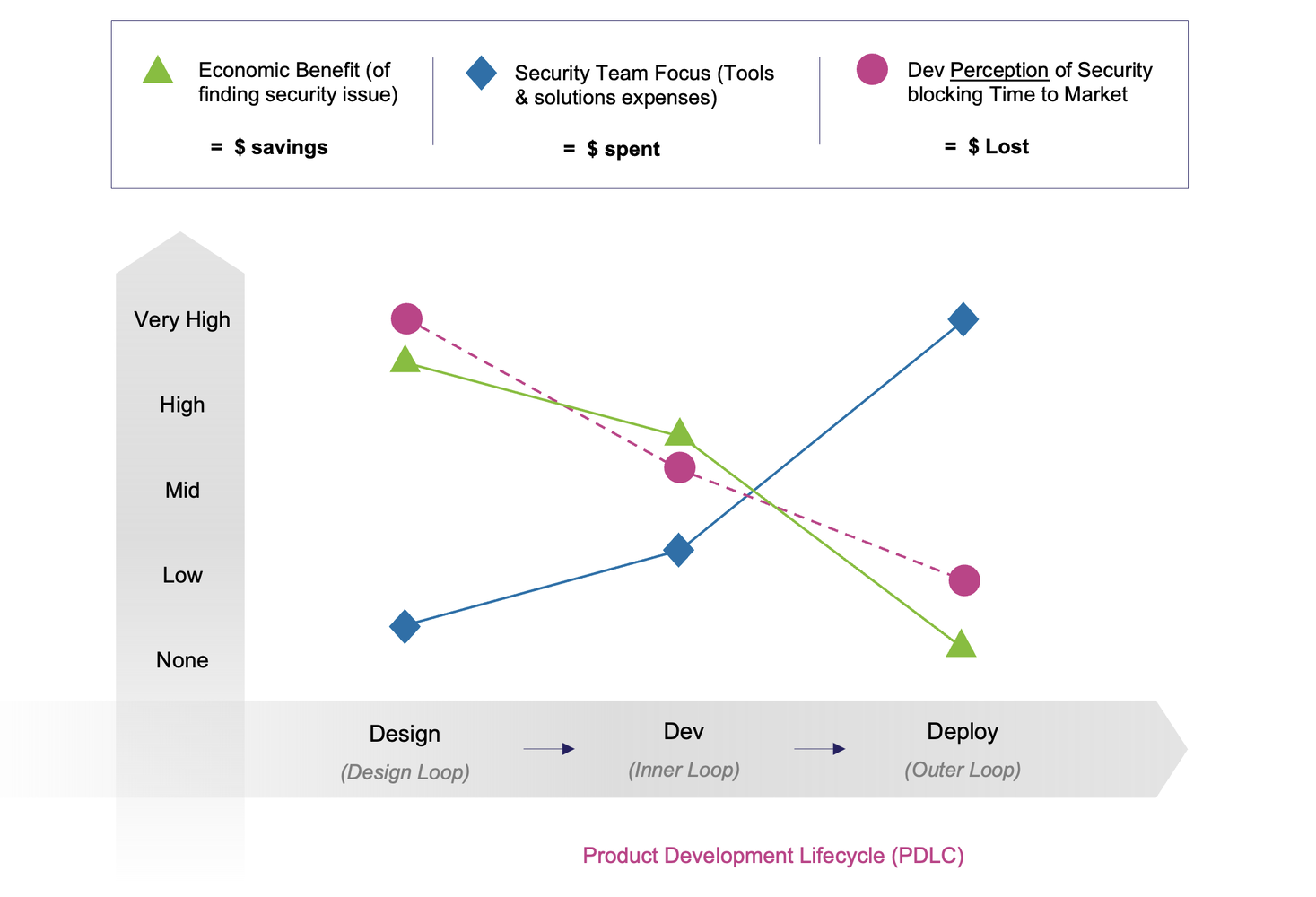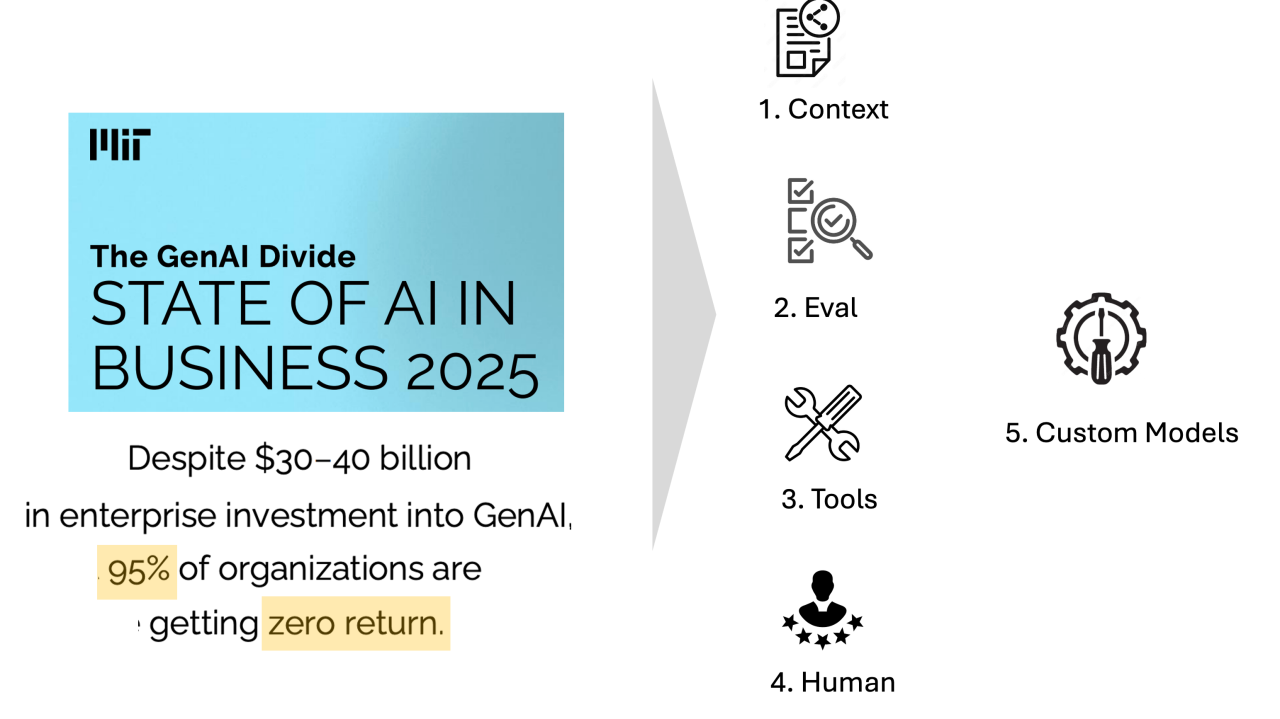· Chiradeep Vittal · blog · 5 min read
The Bottleneck Paradox - Why AI-Assisted Coding Won't Speed Up Your Delivery
A 40% increase in coding speed sounds revolutionary. But what if I told you it might not improve your software delivery timeline by even a single day?

The Bottleneck Paradox: Why AI-Assisted Coding Won’t Speed Up Your Delivery
A 40% increase in coding speed sounds revolutionary. But what if I told you it might not improve your software delivery timeline by even a single day?
The Uncomfortable Truth About Software Delivery
Your team just rolled out GitHub Copilot or Cursor. Productivity metrics are soaring—developers are writing 40–50% more code in less time. The CEO is thrilled. The CTO is preparing a board presentation on AI transformation.
But three months later… release velocity hasn’t budged. Features still take weeks. Security vulnerabilities pile up. Deployment frequency is still monthly.
What went wrong?
The answer lies in a principle Eliyahu Goldratt articulated decades ago in The Goal:
A system’s throughput is always constrained by its slowest point.
In software delivery, that slowest point is rarely how fast developers type code.
Where the Real Bottlenecks Are
Empirical studies show developers spend only 15% of their time writing new code—just 84 minutes in a 9-hour workday (Microsoft). The rest is swallowed by maintenance, technical debt, meetings, and waiting for reviews or approvals.
The 2024 DORA report (39,000+ professionals) makes it clear:
- Code reviews are the #1 constraint. Faster reviews directly correlate with 50% higher delivery performance. Yet with AI, PRs are getting bigger—Faros found PR review times have increased 91%.
- Security remediation is slow. Elite teams fix critical vulns in <1 hour. Average teams take 2–5 days. Low performers? Up to a month.
- Technical debt is enormous. Stripe’s research found devs waste 17.3 hours weekly on maintenance and 13.5 on technical debt—nearly 80% of a work week gone before new features are built.
- Testing bottlenecks are brutal. Teams with <60% test coverage experience 40% longer remediation cycles.
- Cross-team dependencies further drag reviews—Microsoft found PRs involving multiple teams significantly decrease effectiveness.
Even if AI erased coding time entirely (a 100% improvement), you’d only reclaim 15% of the delivery timeline. The other 85% remains untouched.
When Faster Code Makes Things Worse
Here’s the paradox: speeding up code generation often makes downstream bottlenecks worse.
- 91% longer PR review times: AI-generated PRs are often larger (154% bigger on average), which 3–5x increases review effort.
- Explosion of false positives: Security scanners already produce 20–30% false positives. More code → more findings to triage.
- Developer perception gap: METR’s study showed devs predicted a 24% speedup but were actually 19% slower on complex tasks.
So while AI assistants feel productive in the moment, the bottleneck shifts from “writing code” to “reviewing and fixing AI-generated code”—often the harder problem.
What the Best Teams Do Differently
The DORA report shows elite performers achieve 127x faster deployments and 2,293x faster recovery times than low performers. The difference isn’t typing speed—it’s bottleneck management.
Goldratt’s Theory of Constraints gives us three steps:
- Identify the constraint: Where does work actually queue up?
- Exploit the constraint: Maximize efficiency there.
- Subordinate everything else: Align other processes to support it.
For most enterprises, the constraint isn’t development—it’s reviews, security, testing, and approvals.
Applying AI Where It Matters
Your developers probably appreciate the code assistants, but they’re going to increase pressure everywhere in the pipeline. You have to apply AI to the entire process.
If Security Is the Bottleneck
- Automate threat modeling during design phase, preventing security issues before code is written
- Generate security requirements automatically based on application context and compliance needs
- Conduct automated penetration testing that scales with code volume, not human availability
- Intelligently prioritize the 20-30% false positive rate plaguing security tools
- Accelerate security reviews from weeks to hours using AI-powered analysis
If Testing Is the Bottleneck
- Intelligent test generation that keeps pace with code creation
If Reviews Are the Bottleneck
- Automated code review that catches issues before human review
- Smart PR sizing that prevents the 3-5x review penalty
The Action Plan
Immediate Steps:
- Measure your actual constraints using DORA metrics (not velocity or lines of code)
- Limit PR size to under 200 lines regardless of how fast AI can generate code
- Automate what’s actually slow, not what’s already fast
Strategic Initiatives:
- Shift security left with AI-powered threat modeling and requirements generation
- Scale security testing with automated penetration testing that matches code generation speed
- Build feedback loops that prevent large batches from overwhelming review capacity
- Focus on flow rather than individual productivity
The Bottom Line
- AI coding assistants aren’t bad—but they’re potentially increasing pressure on the rest of the pipeline. While developers write code 40% faster, that code sits 91% longer in review. While AI generates more features, security teams fall further behind on remediation. While PRs grow 154% larger, review effectiveness drops 60%.
- The organizations winning with AI aren’t the ones generating the most code. They’re the ones using AI to eliminate their actual bottlenecks—security reviews, threat modeling, requirements validation, and automated testing. They understand that in a pipeline constrained by security and review capacity, making coding faster without addressing these constraints is like putting a bigger engine in a car stuck in traffic.
- AI won’t fix your bottleneck unless you know where it is. And in most enterprises, the bottleneck isn’t in writing code—it’s in everything that happens afterward.
Next step: Identify your true constraint. If it’s security (and it probably is), consider how AI-powered threat modeling, security requirements automation, and intelligent penetration testing could transform weeks of waiting into hours of progress. That’s where the real AI revolution in software delivery begins





